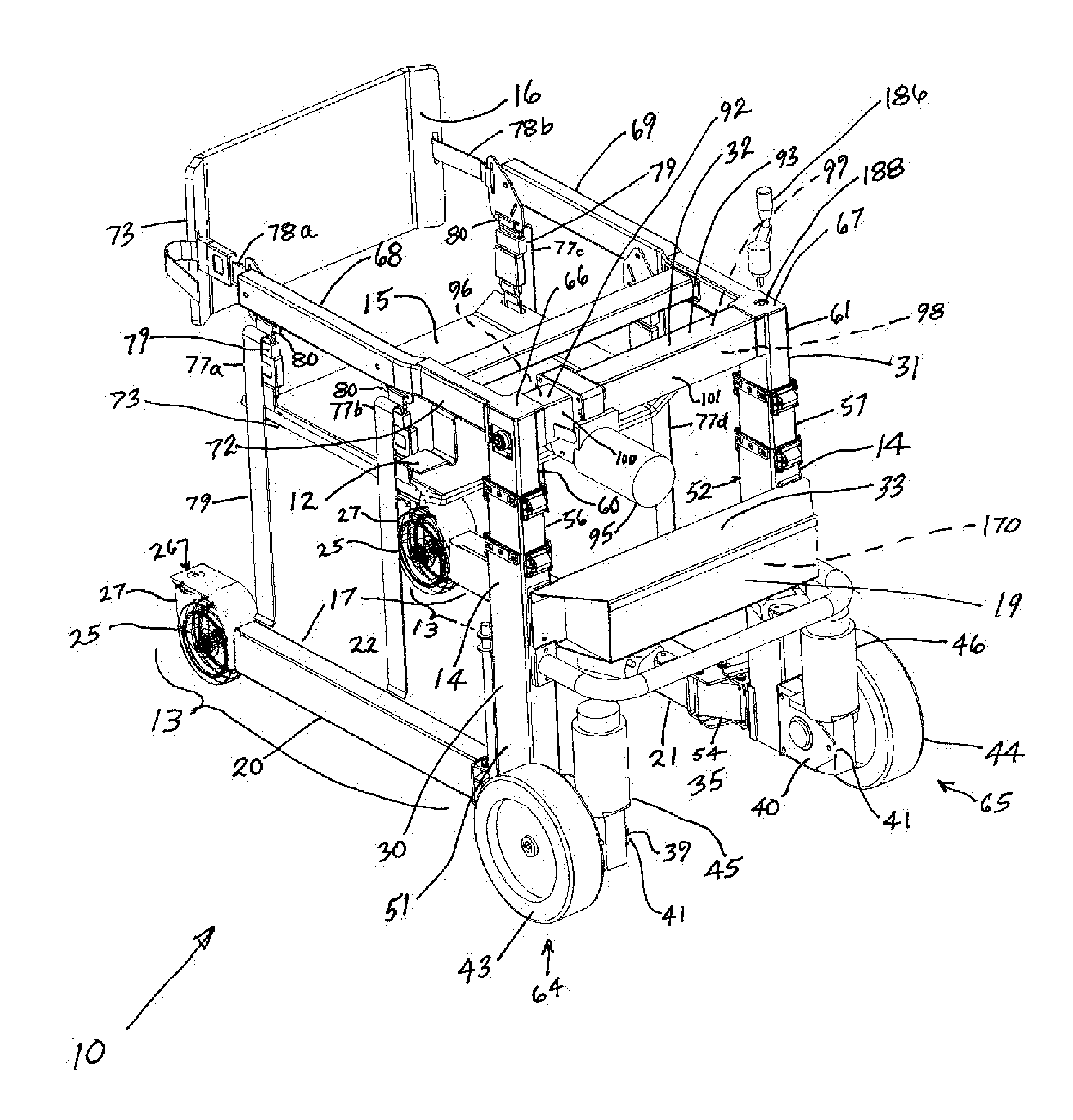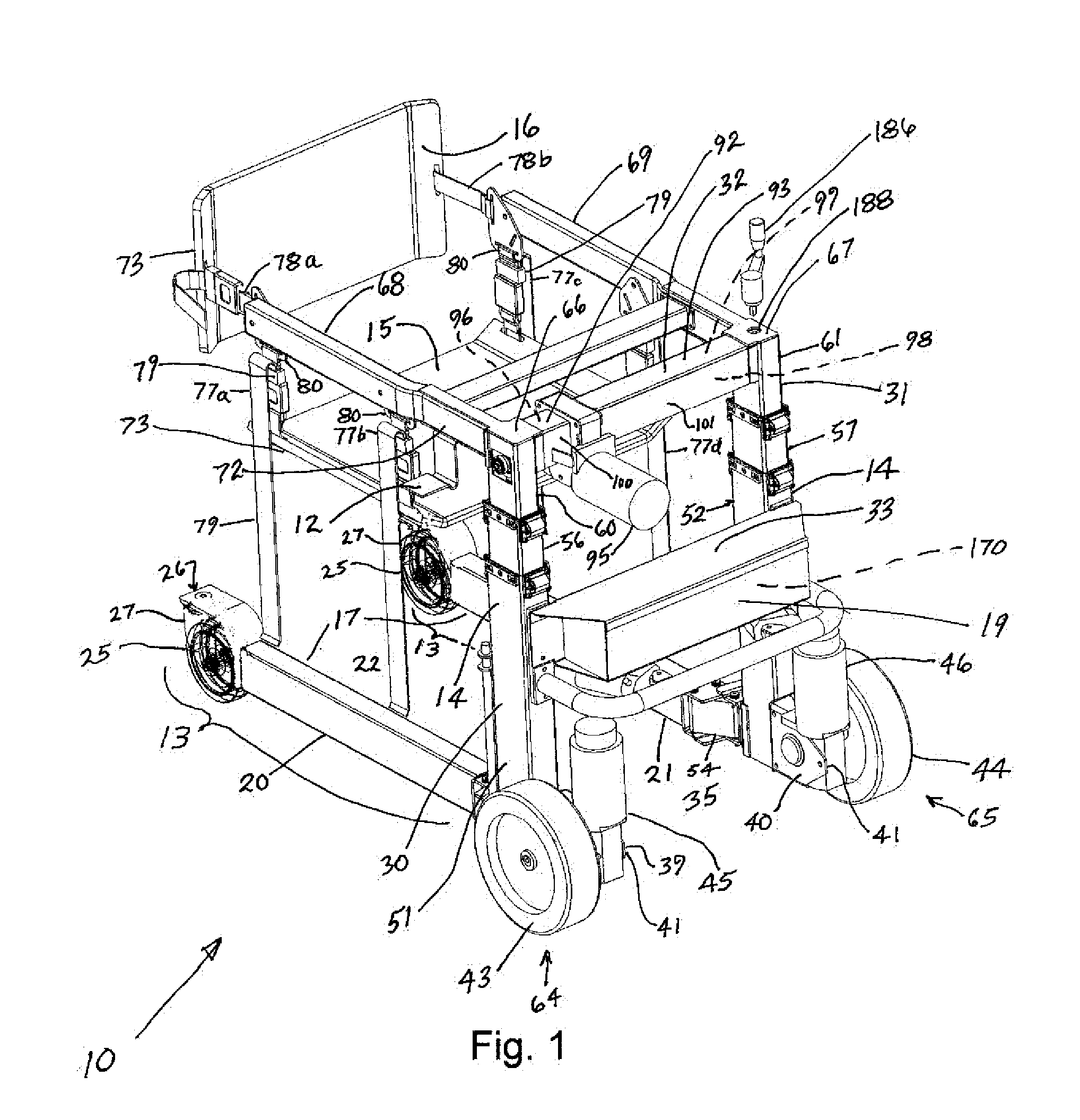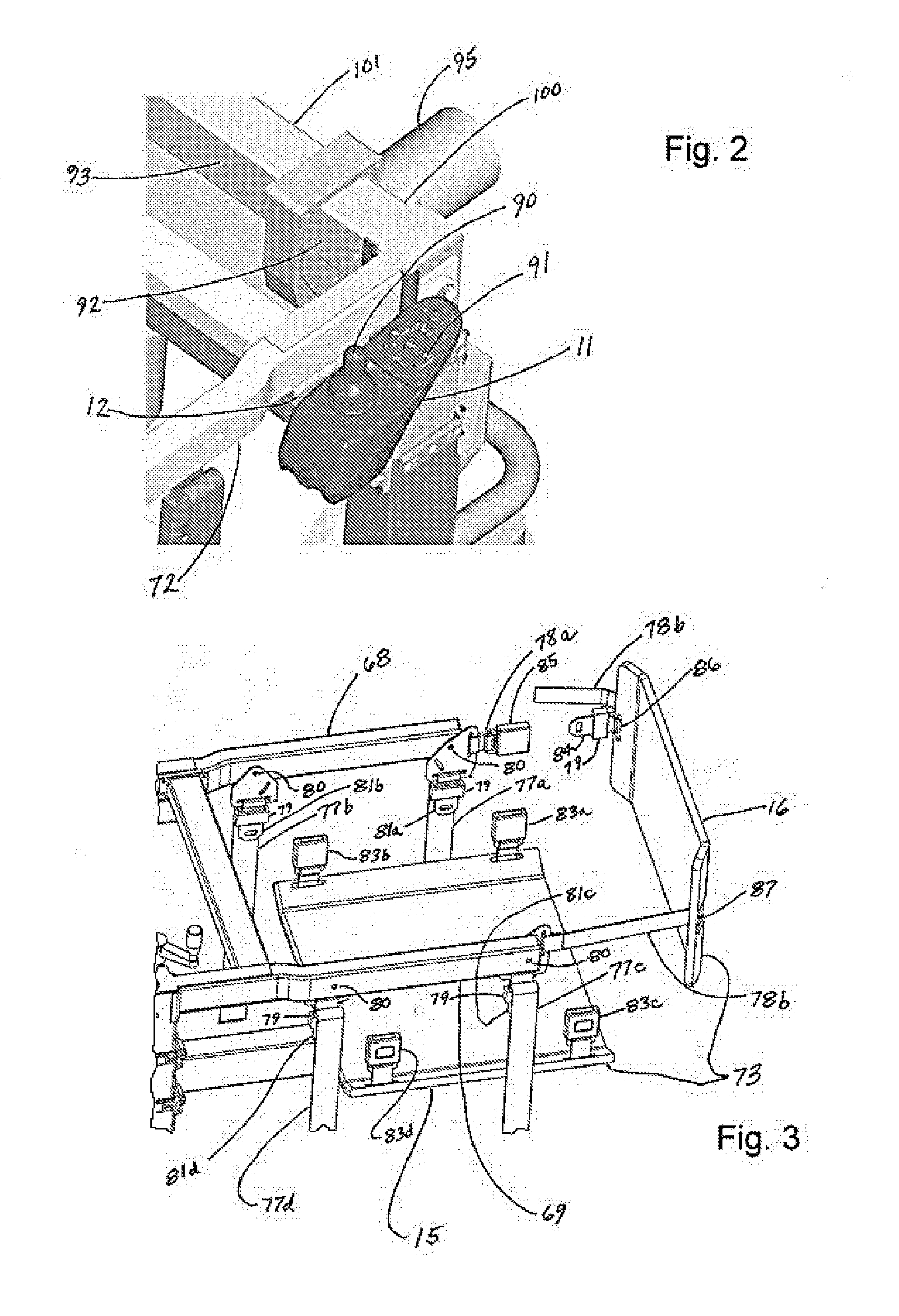Wheelchair Lift Transfer Device
a technology for lifting and transferring devices, which is applied in the field of improved patient transferlifts and rotation devices, can solve the problems of hampered conventional wheelchairs, inconvenient and mobile standing heights, and limited lifting rang
- Summary
- Abstract
- Description
- Claims
- Application Information
AI Technical Summary
Benefits of technology
Problems solved by technology
Method used
Image
Examples
Embodiment Construction
[0142]Referring to FIGS. 1-4, there is illustrated one embodiment of the wheelchair lift-transfer device 10 (herein-after referred to as the “transporter” for convenience) configured as a rear entry power drive wheelchair. The joy-stick drive, lift and actuator control module 11 in FIG. 2 is mounted to bracket 12 in FIG. 1.
[0143]The transporter 10 includes a wheeled base assembly 13 having an upright assembly 14 projecting therefrom. The upright assembly 14 in turn mounts thereon a removable seat 15 and back support 16, the latter being used for receiving an occupant / patient 18 (FIG. 34) for transporting by the transporter 10 and transfer to and from the transporter 10. The wheeled base assembly 13 includes a generally rigid and rearwardly-opening U-shaped horizontally extending wheeled base 17 is defined by the upright assembly 14 at the front 19 and a pair of generally parallel and rearwardly extending rear wheel support arms 20 and 21. These rear wheel support arms are sidewardly...
PUM
 Login to View More
Login to View More Abstract
Description
Claims
Application Information
 Login to View More
Login to View More - R&D
- Intellectual Property
- Life Sciences
- Materials
- Tech Scout
- Unparalleled Data Quality
- Higher Quality Content
- 60% Fewer Hallucinations
Browse by: Latest US Patents, China's latest patents, Technical Efficacy Thesaurus, Application Domain, Technology Topic, Popular Technical Reports.
© 2025 PatSnap. All rights reserved.Legal|Privacy policy|Modern Slavery Act Transparency Statement|Sitemap|About US| Contact US: help@patsnap.com



